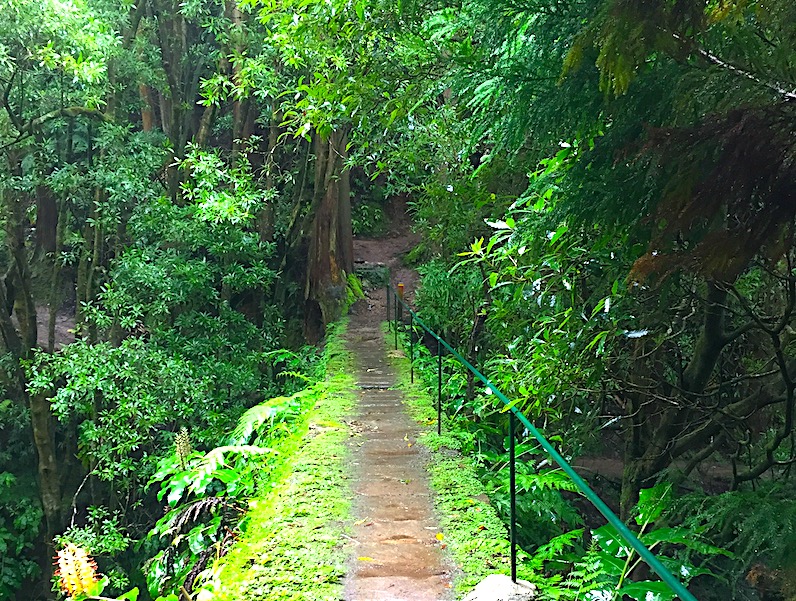The Azores weather in January is typically some of the coolest and wettest. But it’s also the least busy time of year. So you can get good deals on accommodation rates, and even the must see sights are not busy. January weather in the Azores is also a great for soaking in the many amazing hot springs on Sao Miguel island.
Read on to learn more about Azores January weather and other helpful information. Find out accommodation rates, number of visitors, what flowers are growing in January and if there are any festivals or public holidays. If you’re still trying to decide the best time to visit the Azores, checkout our month-to-month comparison, so that you can pick the perfect month to visit!

Azores Weather in January
January is one of the coolest months in the Azores. On average, the high is 61°F and the average low is 52°F. January is more rainy than the spring and summer but less rainy than the late fall. January in the Azores averages 5.3 inches of rain and 19 of precipitation. The ocean temperature in January averages 63°F. The average humidity in the Azores in September is 82%. As a point of reference, Boston has on average 3.4 inches of rain and 13 days of precipitation in Boston and 63% humidity in January.
The ocean is chilly in January and averages 63°F. If you head to Sao Miguel island in January, we instead recommend visiting at least one of the eight awesome hot springs. If it’s raining when you visit in January, it’s also a great time to hike through some of the dense forests in the Azores.
What to Pack for Azores Weather in January
Even though the weather isn’t as great in January in the Azores, it typically doesn’t rain the whole day. So you can usually get out and hike every day. Leggings and light pants are perfect for hiking in January in the Azores. We recommend wearing layers on top. The sun can make it feel warmer than the actual temperature, so it’s great to start with a t-shirt or tank top.
The higher elevations, especially around the crater lakes are often cloudy and windy in January. So bring a long sleeve shirt and a light vest and/or jacket. The real feel can feel cooler than the actual temperatures at these higher elevations. It’s always a good idea to bring a rain jacket. Check out our Ultimate Guide to Azores Weather to learn the best apps for helping you to catch those crater lakes when they’re out of the fog!
Jeans, a long sleeve shirt and a light jacket are enough for enjoying January evenings. Don’t forget a bathing suit and sandals for the hot springs.
Sunrise/Sunset Times in the Azores in January
Like elsewhere in the northern hemisphere, January is one of the darkest month in the Azores. The sun sun rises at 7:45am on January 1 and sets at 6:07pm.

Azores Crowds and Accommodation Rates in January
You’ll likely have the largest selection of hotels and rentals in the Azores in January, because there are typically the fewest overnight stays than any other month in the Azores. Fewer visitors also means lower accommodation rates. The average daily rate for an Airbnb in January on Sao Miguel Island in 2019 was €53. You may find a rental for €30 a night in January in the Azores or a luxury hotel room for close to €100.
Reservations usually aren’t necessary in January in the Azores, except maybe on Saturday at one of the more popular restaurants. But even on Saturday, you can usually stop by a restaurant that day in January and put your name on the list for that night. Head here to get in the know about which restaurants require reservations, even in January.
Flowers Blooming in the Azores in January
You’ll mostly find amazing shades of green in January in the Azores – think Scotland or Ireland with a little tropical flavor. But there is still some color, including succulents blooming along the coast. If you’re on Sao Miguel in January, you can also check out the very instagramable pineapple plantation.
Whale and Dolphin Sightings in January
If you go whale watching in January, you may see the species that live in the Azores year-round: common dolphin, bottlenose dolphin, Risso’s dolphin and sperm whales. Just be prepared for your whale watching trip to be cancelled, it happens often in the winter months because of bad weather or rough seas.
Azorean Festivals and Public Holidays in January
New Years Day is a public holiday in the Azores, but there are no major festivals.